Lili Tao
Code Librarian: A Software Package Recommendation System
Oct 11, 2022

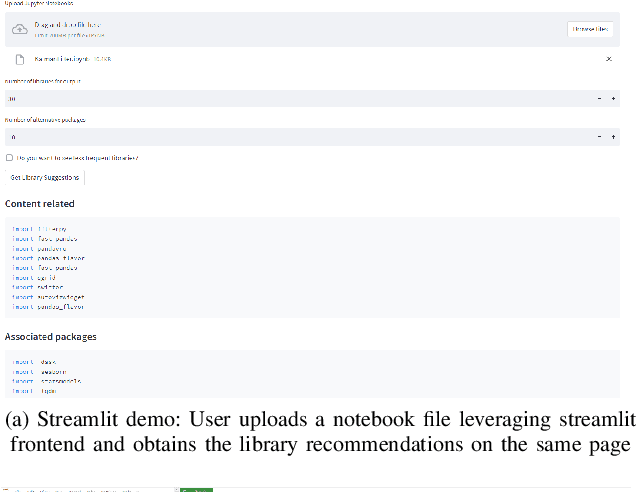

Abstract:The use of packaged libraries can significantly shorten the software development cycle by improving the quality and readability of code. In this paper, we present a recommendation engine called Librarian for open source libraries. A candidate library package is recommended for a given context if: 1) it has been frequently used with the imported libraries in the program; 2) it has similar functionality to the imported libraries in the program; 3) it has similar functionality to the developer's implementation, and 4) it can be used efficiently in the context of the provided code. We apply the state-of-the-art CodeBERT-based model for analysing the context of the source code to deliver relevant library recommendations to users.
CV4Code: Sourcecode Understanding via Visual Code Representations
May 11, 2022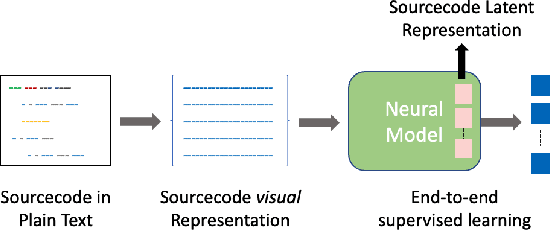
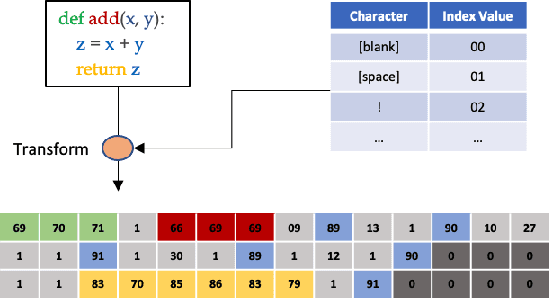

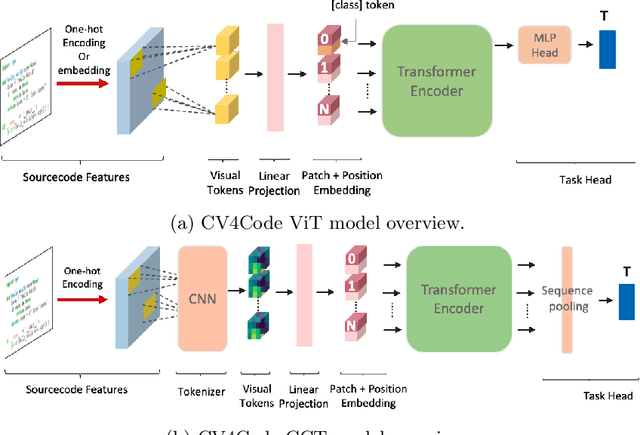
Abstract:We present CV4Code, a compact and effective computer vision method for sourcecode understanding. Our method leverages the contextual and the structural information available from the code snippet by treating each snippet as a two-dimensional image, which naturally encodes the context and retains the underlying structural information through an explicit spatial representation. To codify snippets as images, we propose an ASCII codepoint-based image representation that facilitates fast generation of sourcecode images and eliminates redundancy in the encoding that would arise from an RGB pixel representation. Furthermore, as sourcecode is treated as images, neither lexical analysis (tokenisation) nor syntax tree parsing is required, which makes the proposed method agnostic to any particular programming language and lightweight from the application pipeline point of view. CV4Code can even featurise syntactically incorrect code which is not possible from methods that depend on the Abstract Syntax Tree (AST). We demonstrate the effectiveness of CV4Code by learning Convolutional and Transformer networks to predict the functional task, i.e. the problem it solves, of the source code directly from its two-dimensional representation, and using an embedding from its latent space to derive a similarity score of two code snippets in a retrieval setup. Experimental results show that our approach achieves state-of-the-art performance in comparison to other methods with the same task and data configurations. For the first time we show the benefits of treating sourcecode understanding as a form of image processing task.
Towards Interpretable and Robust Hand Detection via Pixel-wise Prediction
Jan 13, 2020



Abstract:The lack of interpretability of existing CNN-based hand detection methods makes it difficult to understand the rationale behind their predictions. In this paper, we propose a novel neural network model, which introduces interpretability into hand detection for the first time. The main improvements include: (1) Detect hands at pixel level to explain what pixels are the basis for its decision and improve transparency of the model. (2) The explainable Highlight Feature Fusion block highlights distinctive features among multiple layers and learns discriminative ones to gain robust performance. (3) We introduce a transparent representation, the rotation map, to learn rotation features instead of complex and non-transparent rotation and derotation layers. (4) Auxiliary supervision accelerates the training process, which saves more than 10 hours in our experiments. Experimental results on the VIVA and Oxford hand detection and tracking datasets show competitive accuracy of our method compared with state-of-the-art methods with higher speed.
Home Activity Monitoring using Low Resolution Infrared Sensor
Nov 13, 2018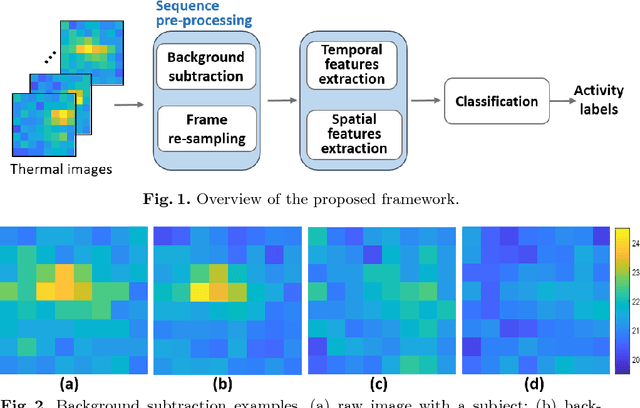

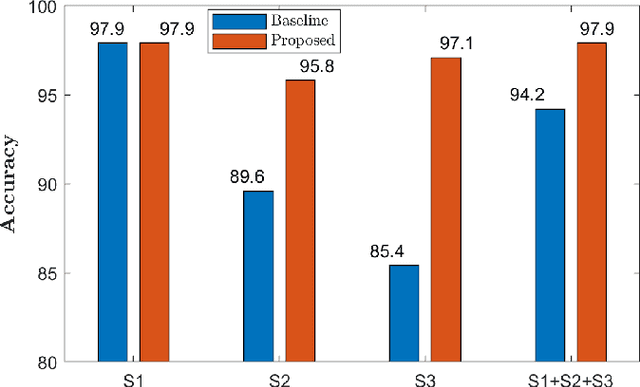
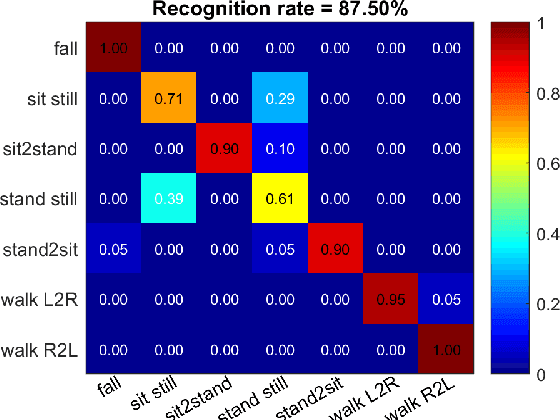
Abstract:Action monitoring in a home environment provides important information for health monitoring and may serve as input into a smart home environment. Visual analysis using cameras can recognise actions in a complex scene, such as someones living room. However, although there the huge potential benefits and importance, specifically for health, cameras are not widely accepted because of privacy concerns. This paper recognises human activities using a sensor that retains privacy. The sensor is not only different by being thermal, but it is also of low resolution: 8x8 pixels. The combination of the thermal imaging, and the low spatial resolution ensures the privacy of individuals. We present an approach to recognise daily activities using this sensor based on a discrete cosine transform. We evaluate the proposed method on a state-of-the-art dataset and experimentally confirm that our approach outperforms the baseline method. We also introduce a new dataset, and evaluate the method on it. Here we show that the sensor is considered better at detecting the occurrence of falls and Activities of Daily Living. Our method achieves an overall accuracy of 87.50% across 7 activities with a fall detection sensitivity of 100% and specificity of 99.21%.
Calorie Counter: RGB-Depth Visual Estimation of Energy Expenditure at Home
Jul 27, 2016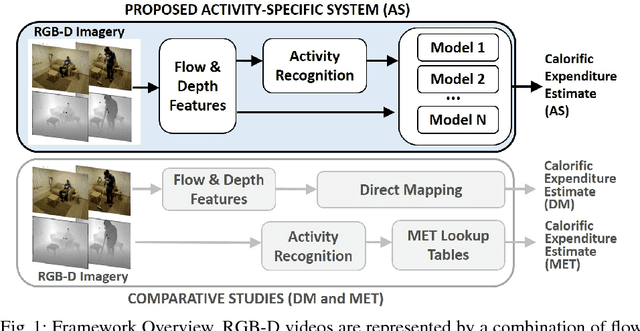

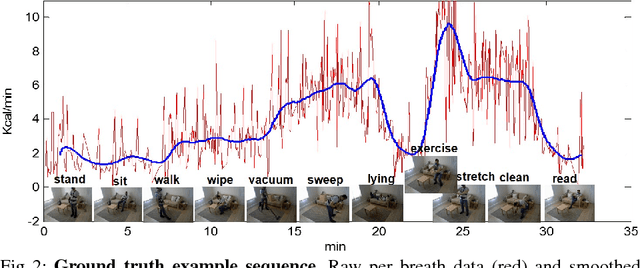

Abstract:We present a new framework for vision-based estimation of calorific expenditure from RGB-D data - the first that is validated on physical gas exchange measurements and applied to daily living scenarios. Deriving a person's energy expenditure from sensors is an important tool in tracking physical activity levels for health and lifestyle monitoring. Most existing methods use metabolic lookup tables (METs) for a manual estimate or systems with inertial sensors which ultimately require users to wear devices. In contrast, the proposed pose-invariant and individual-independent vision framework allows for a remote estimation of calorific expenditure. We introduce, and evaluate our approach on, a new dataset called SPHERE-calorie, for which visual estimates can be compared against simultaneously obtained, indirect calorimetry measures based on gas exchange. % based on per breath gas exchange. We conclude from our experiments that the proposed vision pipeline is suitable for home monitoring in a controlled environment, with calorific expenditure estimates above accuracy levels of commonly used manual estimations via METs. With the dataset released, our work establishes a baseline for future research for this little-explored area of computer vision.
Multiple Human Tracking in RGB-D Data: A Survey
Jun 14, 2016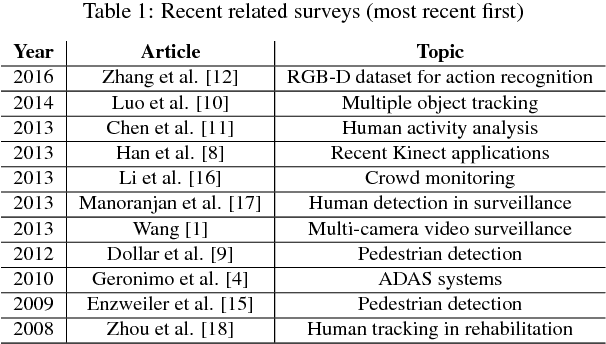

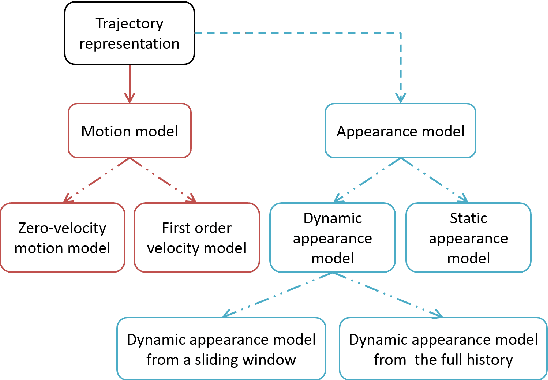
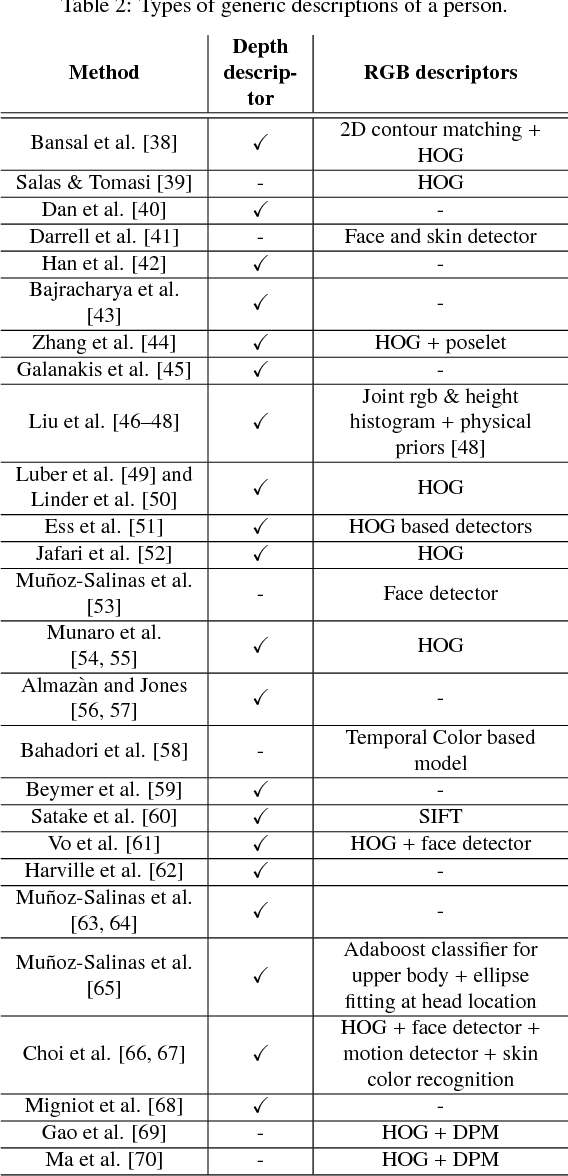
Abstract:Multiple human tracking (MHT) is a fundamental task in many computer vision applications. Appearance-based approaches, primarily formulated on RGB data, are constrained and affected by problems arising from occlusions and/or illumination variations. In recent years, the arrival of cheap RGB-Depth (RGB-D) devices has {led} to many new approaches to MHT, and many of these integrate color and depth cues to improve each and every stage of the process. In this survey, we present the common processing pipeline of these methods and review their methodology based (a) on how they implement this pipeline and (b) on what role depth plays within each stage of it. We identify and introduce existing, publicly available, benchmark datasets and software resources that fuse color and depth data for MHT. Finally, we present a brief comparative evaluation of the performance of those works that have applied their methods to these datasets.
 Add to Chrome
Add to Chrome Add to Firefox
Add to Firefox Add to Edge
Add to Edge